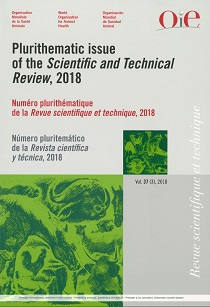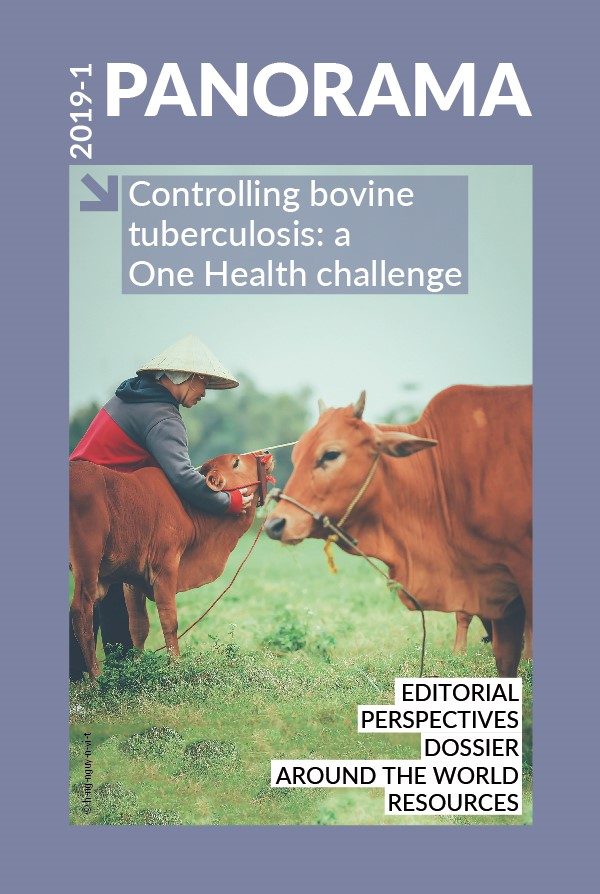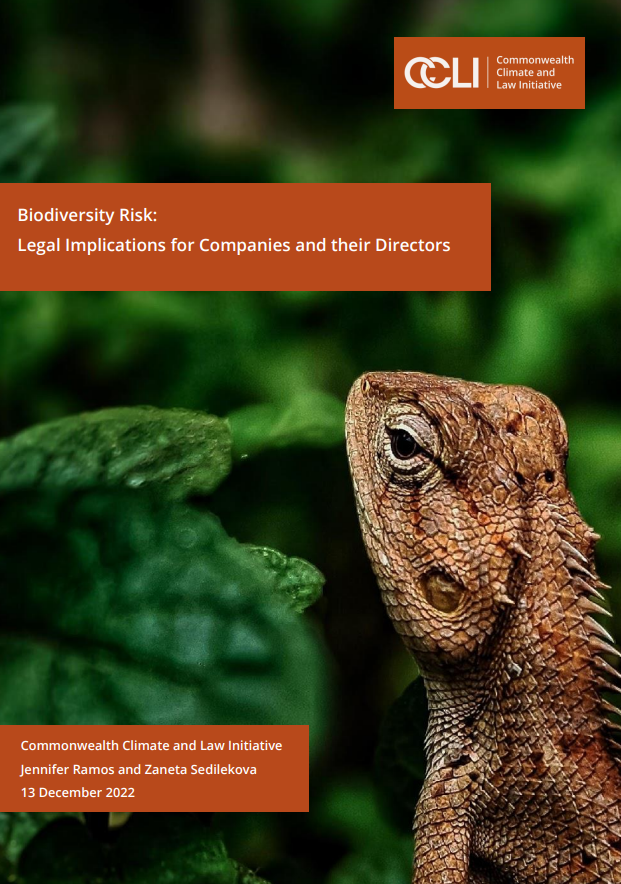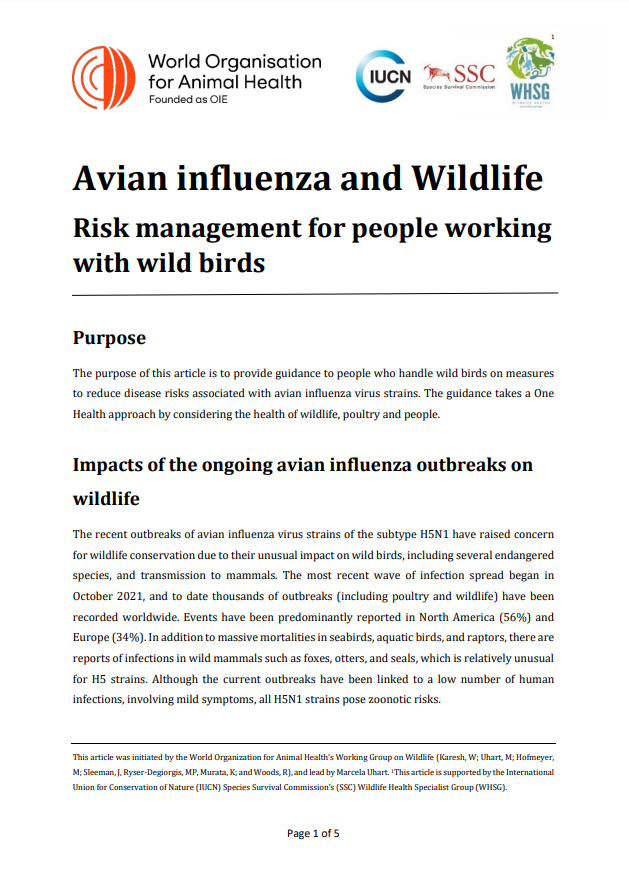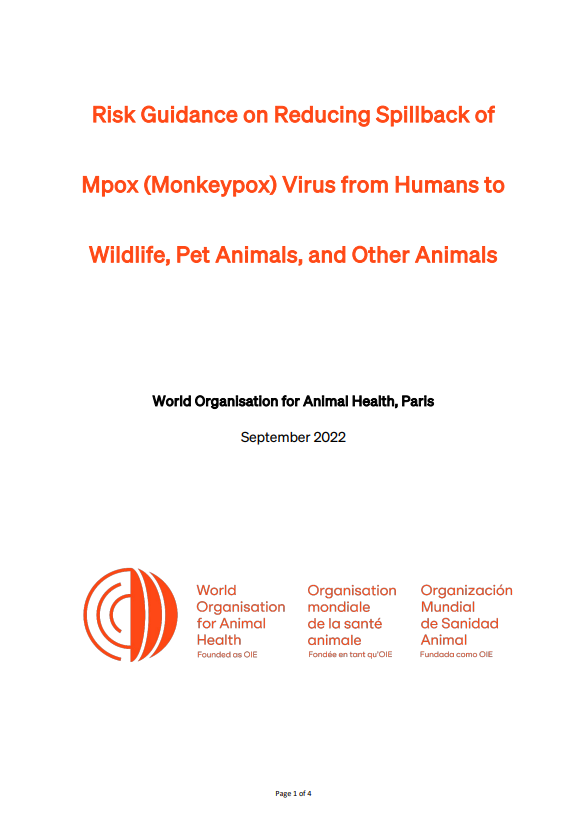Keywords
- Isolation and analysis of the molecular epidemiology and zoonotic significance of Mycobacterium tuberculosis in domestic and wildlife ruminants from three states in India. Authors: F. Mukherjee, V.S. Bahekar, S.Y. Pasha, P. Kannan, A. Prasad, S.K. Rana, A. Kanani, G.K. Sharma, D. Premalatha & V.A. Srinivasan – doi:10.20506/rst.37.3.2902.
The majority of tuberculosis cases in ruminants are caused by Mycobacterium bovis (MB). However, in this study, the authors reported the isolation of Mycobacterium tuberculosis (MT) from bovine milk, nasal swabs and postmortem tissue samples collected from cattle and buffaloes in the states of Telangana, Maharashtra and Gujarat in India in the period from 2010 to 2015. The isolates were confirmed as Mycobacterium due to their growth characteristics and colony morphology in a commercial liquid medium Mycobacterial Growth Indicator Tube (MGIT)™ employing the BD BACTEC™ MGIT™ 960 system and the Lowenstein-Jensen (LJ) medium supplemented with glycerol but not with sodium pyruvate, and BD-DIFCO™ Middlebrook 7H10 agar containing oleic albumin dextrose catalase (OADC). These isolates were initially identified as members of the M. tuberculosis complex (MTC) using a commercial nested polymerase chain reaction (PCR) kit based on the IS6110 MTC specific nucleotide sequence. The isolates were confirmed as MT using three commercial line probe assay kits, were further genotyped, and the spoligotypes identified were of East African Indian (EAI) 3_IND, EAI5, Central-Asian (CAS) 1_DELHI, U and T1 lineages. Two MT isolates from one antelope (Antilope cervipara) and one gazelle (Gazella bennettii) from Gujarat, which were identified previously, were spoligotyped during this study and identified as belonging to EAI3_IND and EAI5 lineages, respectively. The epidemiological significance and zoonotic implications of regional presence and documentation of the same or two different spoligotypes in different species within the family Bovidae as well as humans is discussed.
- Antibacterial activity of silver nanoparticles against field and reference strains of Mycobacterium tuberculosis, Mycobacterium bovis and multiple-drug-resistant tuberculosis strains. Authors: A. Selim, M.M. Elhaig, S.A. Taha & E.A. Nasr – doi:10.20506/rst.37.3.2888.
This study aims to investigate the antimycobacterial activity of silver nanoparticles (AgNPs) by determining the minimal inhibitory concentration (MIC) of AgNPs, using the microplate Alamar blue assay. The AgNPs were chemically synthesised and their form and size were characterised by ultraviolet-visible absorption spectrophotometry, transmission electron microscopy and X-ray diffraction. The reference strains of Mycobacterium bovis and Mycobacterium tuberculosis H37Rv, and one multiple-drug-resistant (MDR) strain of M. tuberculosis were tested, as well as clinical isolates of M. bovis and M. tuberculosis. The AgNPs were tetrahydral with a few spherical particles and an average particle size of 50 nm. The mycobacterial strains were varied with MICs of AgNPs. Both reference strains of M. tuberculosis and M. bovis, in addition to the MDR strain of M. tuberculosis, were successfully inhibited by AgNPs at MICs of 1 μg/ml, 4 μg/ml and 16 μg/ml, respectively, whereas clinical isolates of M. bovis and M. tuberculosis were inhibited at MIC values of 4–32 μg/ml and 1–16 μg/ml, respectively. The AgNPs showed an in vitro chemotherapeutic effect against Mycobacterium spp. Thus, they can be used to treat tuberculosis not only in humans but also in animals, and may be useful in tuberculosis prevention and control strategies worldwide.
[ Order here ]




